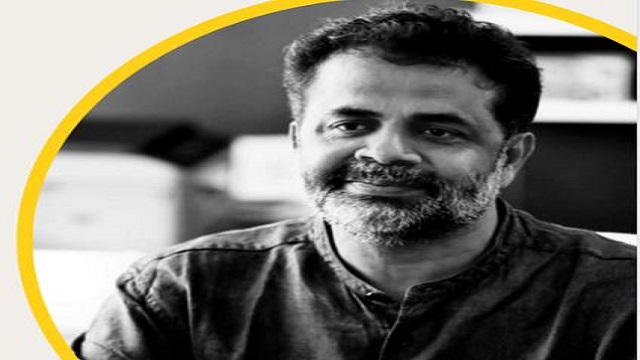Odisha-based filmmaker Himansu Khatua has many feathers to his cap, including a national and 8 state awards
Himansu Khatua began his film career as a sound recordist and sound designer with the award-winning ‘Indradhanura Chhai’ (1993)
Bhubaneswar: Born in Bhadrak district and an alumnus of FTII, Pune, with specialization in Sound Recording and Sound Engineering, Himansu Khatua began his film career as a sound recordist and sound designer with the award-winning ‘Indradhanura Chhai’ (1993), directed by Susant Misra and produced by Jugal Debata.
‘Sunya Swarupa’ (Contours of the Void, 1996), the debut film of filmmaker Himansu Khatua (born 1965) won the National Award for Best Regional Film in Odia and five state awards, and was screened at the Rotterdam Film Festival and Sochi International Film Festival, Russia, among other places.
His second film ‘Kathantara’ (Another Story, 2005) also won a National Award and eight state awards. His works include the documentary ‘Kahe Ballava’, telefilms ‘Kahani Nuhen’ and ‘Prayaschita’, films like ‘Matirabandhan’ (The Inheritance, 2012) and the acclaimed ‘Krantidhara’ (Coup de Grace, 2014), a few educational films and also TV serials.
Khatua was instrumental in establishing three schools at KIIT University, Bhubaneswar – School of Film and Media Sciences, School of Mass Communication and School of Fashion Technology. He is currently working as the Director of Satyajit Ray Film and Television Institute (SRFTI) in Kolkata.
The filmmaker has been applauded for the analytical prowess and depth of his work, especially with focus on women empowerment. Considered a landmark film in Odia cinema, ‘Kathantara’ is based on the aftermath of the 1999 cyclone in Odisha, dealing with the lives and predicaments of cyclone survivors, with a young widow at its center. ‘Krantidhara’, based on the novel Jhada Parara Surya by Iti Samanta, earned state awards, Asian Excellency Award at the international level and was also adjudged as the best film at the South Korean Film Festival. The film depicts how a conventional daughter-in-law who never raised her voice against her family goes on to become the hero figure of her own life when in a turn of events she is forced by her sarpanch husband to enter politics.
Talking about the journey of Odia cinema, Khatua states, “The early years of cinema from 1930s to 1950s were at a formative stage. Then slowly, adaptation came into the film industry. Most popular films have been made from the 1970s to 1990s. Golden era of Odia cinema was 1980 to 1990. When cinema education came, FTII played a major role in all the states providing good filmmakers and products of FTII changed the entire perspective of cinema.” About the challenges the filmmakers from the state face, he says, “For a filmmaker, a huge amount of money is involved and (filmmaking) is a very complex art form, he said in an interview to Film Heritage Foundation a non-profit organization.
To raise funds for making a film is a major problem here. We are also facing problems in marketing and promotion of the films.




 Kalinga AI
Kalinga AI